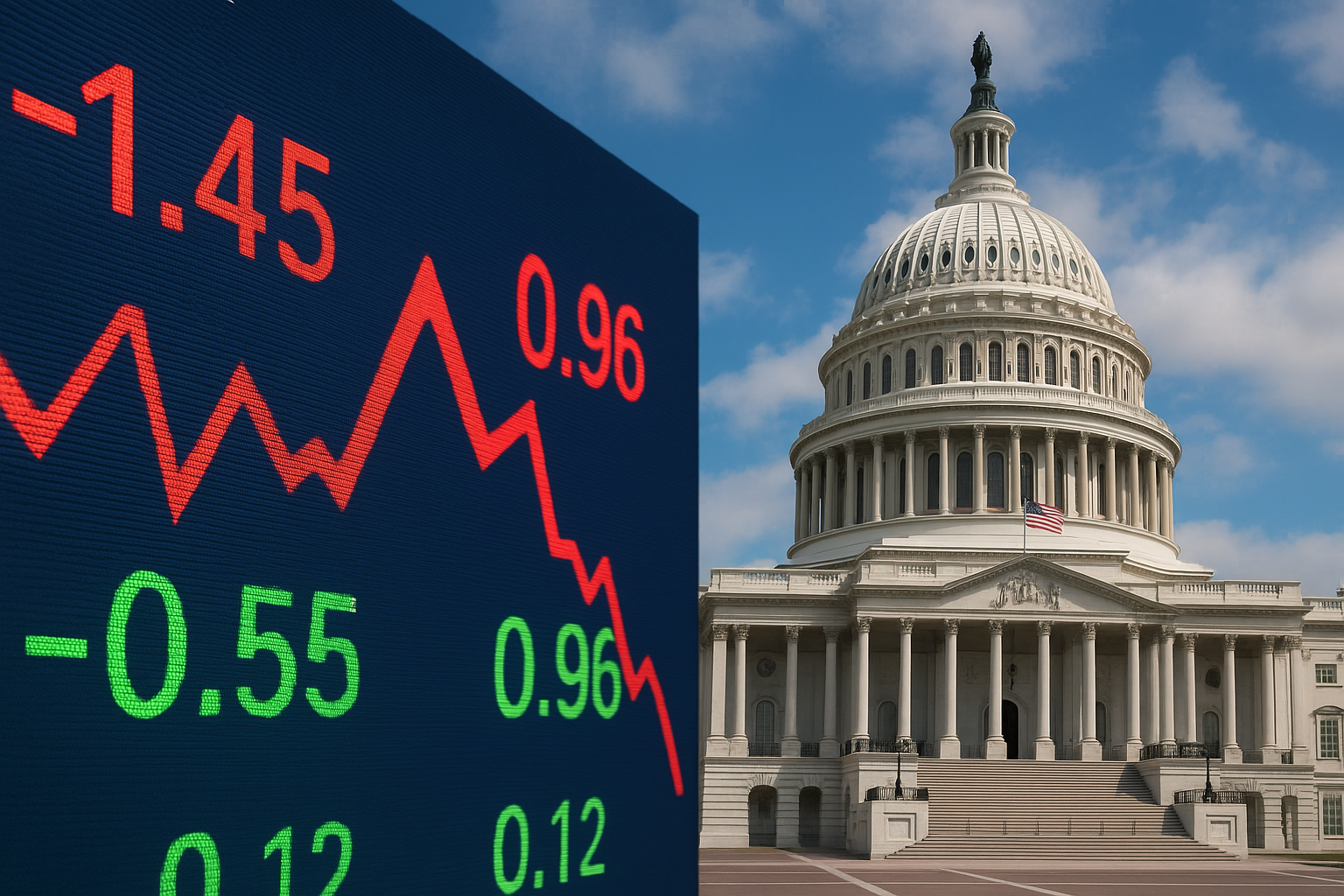The U.S. stock market kicked off the week with a strong rebound, signaling relief among investors after a tense stretch marked by fiscal uncertainty and geopolitical crosscurrents. On Monday, the S&P 500 surged 1.5 % and the Nasdaq Composite jumped 2.3 %, fueled by optimism that lawmakers may soon avert a potential federal funding lapse. Yet by Tuesday morning, that enthusiasm appeared to fade, with futures flattening and traders eyeing the upcoming Veterans Day–shortened week as a possible pause in market momentum.
The swift rebound and equally swift stall underscore how sensitive investor sentiment has become to policy news out of Washington — and how volatile the broader market mood remains.
Political Relief Lifts Wall Street
Monday’s rally was driven largely by headlines suggesting progress toward a temporary government funding deal, as reported by AP News and Reuters. Investors, weary of political gridlock and budget showdowns, welcomed the indication that a shutdown could be avoided.
Tech and growth stocks led the surge. The Nasdaq’s strong 2 % plus move was powered by rebounds in large-cap names such as Microsoft ($MSFT) and Nvidia ($NVDA), both of which had faced selling pressure in prior sessions amid concerns of stretched valuations. Treasury yields dipped modestly as risk appetite improved, while the U.S. dollar softened slightly — a combination that gave equities additional lift.
However, by late evening, futures began to lose steam. Morningstar noted that Tuesday’s pre-market trading pointed to a muted open, reflecting investor hesitation to chase gains ahead of the mid-November lull and ongoing inflation data releases later this week.
Why This Matters for Investors
The rebound offers a telling snapshot of current market psychology: the intersection of political relief and structural caution. Over the past several months, market performance has been dominated by fiscal brinkmanship, central-bank signaling, and tech-sector valuations. Each policy headline now acts as a short-term market catalyst — a sign of how fragile the recovery narrative remains.
According to Reuters analysts, roughly 65 % of S&P 500 gains this quarter have come from the top five technology names. That concentration raises concerns that the rally lacks breadth. A temporary lift from political news may soothe nerves, but it does little to address deeper issues like uneven sector rotation or consumer-spending fatigue.
Meanwhile, volatility measures such as the CBOE VIX Index remain near multi-month lows — a technical signal that may give a false sense of calm. “When volatility compresses around policy events, markets tend to overreact to small shifts in sentiment,” said Jeffrey Kleintop, chief global investment strategist at Charles Schwab, in a recent client note. “The short-term relief may quickly give way to renewed uncertainty if budget negotiations stall again.”
Market Data Snapshot
- S&P 500: +1.5 % (4,980)
- Nasdaq Composite: +2.3 % (15,520)
- Dow Jones Industrial Average: +0.9 % (38,210)
- U.S. 10-Year Treasury Yield: 4.42 % (–6 bps)
- WTI Crude: $79.80 (–0.3 %)
(Source: AP News, Reuters Markets Data, Bloomberg Terminal, 11 Nov 2025)
Future Trends to Watch
1. Policy Stability and Market Confidence
While Monday’s rebound suggests temporary relief, sustained performance will depend on tangible fiscal outcomes. A confirmed resolution to funding issues could drive another leg higher — but renewed debate or delays could reignite volatility.
2. Tech Valuation Pressures
The Nasdaq’s outsized gain hints at persistent investor reliance on megacaps. As Morningstar analysts warn, elevated earnings multiples in AI-linked names could amplify downside risk if Q4 results fail to deliver.
3. Sector Rotation Signals
Defensive sectors like utilities and consumer staples may benefit if volatility resurfaces. At the same time, renewed appetite for cyclicals — particularly in energy and industrials — could indicate confidence in broader economic resilience.
Key Investment Insight
The market’s relief rally underscores a crucial lesson: in politically driven markets, reactionary moves can mask underlying structural vulnerabilities. Investors should resist the urge to trade on short-term optimism alone. Instead, focus on positioning for policy-stabilized growth, favoring companies with solid balance sheets, diversified revenue streams, and low exposure to fiscal uncertainty.
Equity exposure should be paired with defensive hedges — for instance, gold or short-duration Treasuries — to buffer against renewed funding or inflation shocks. Institutional investors, in particular, may find opportunities in sectors that benefit from both fiscal support and productivity themes, such as semiconductors, infrastructure, and industrial automation.
Stay Ahead with MoneyNews.Today
As the U.S. market enters the year-end stretch, volatility tied to Washington and Wall Street will likely persist. Stay connected with MoneyNews.Today for timely investor insights, expert-driven analysis, and real-time coverage of the trends shaping your portfolio.





